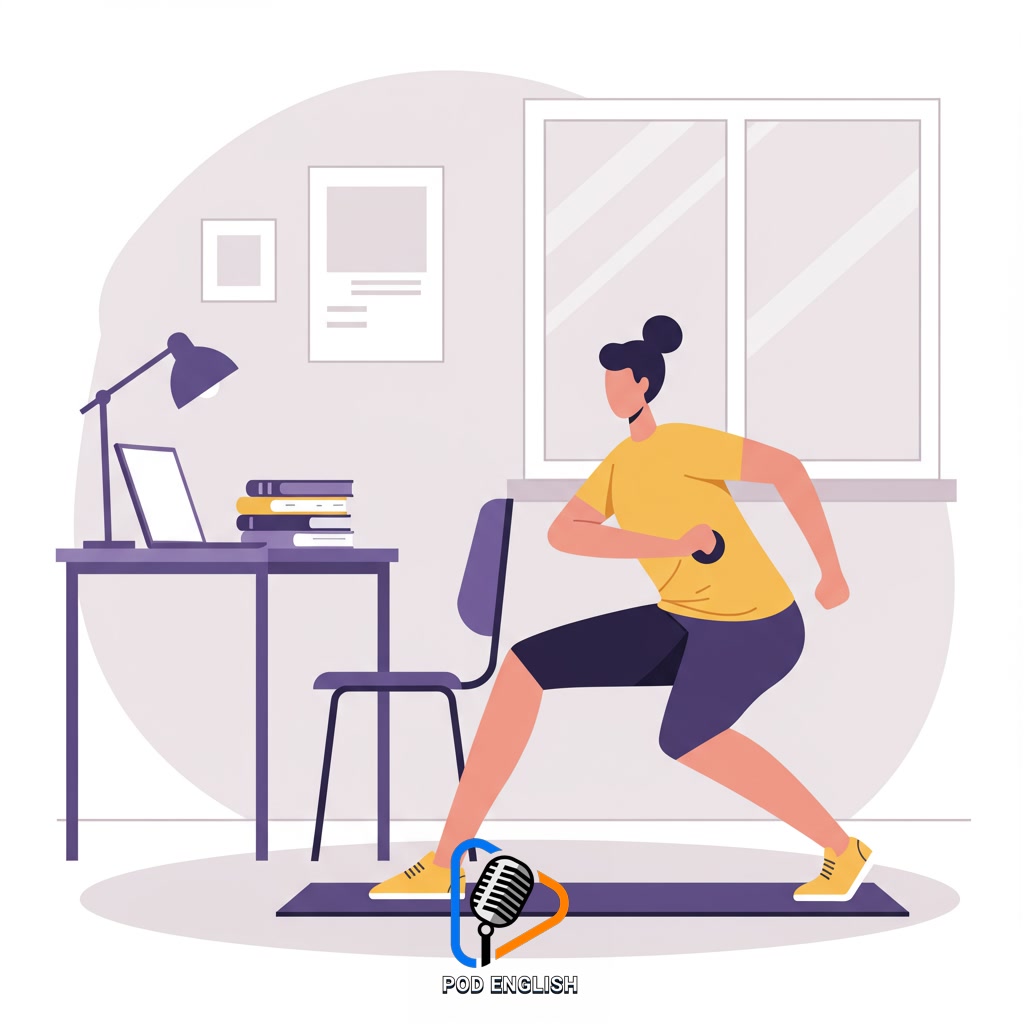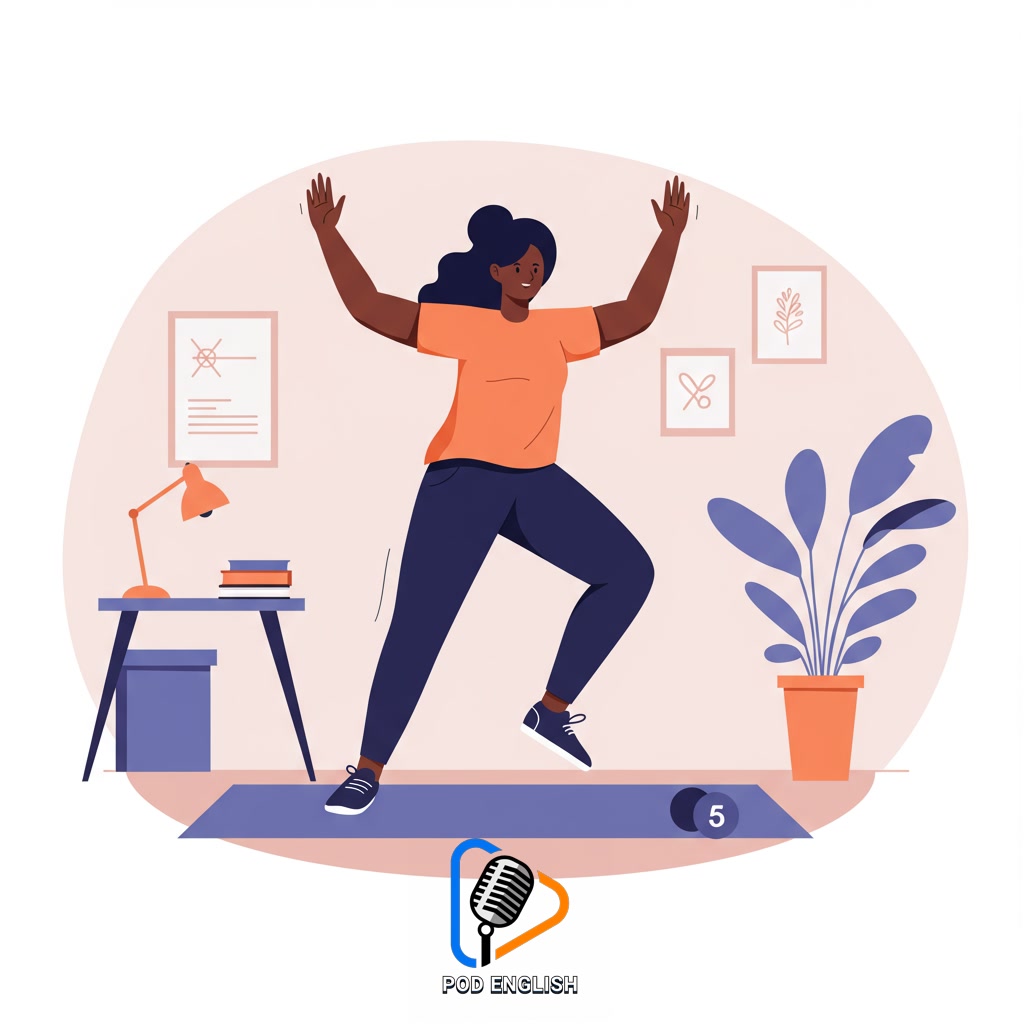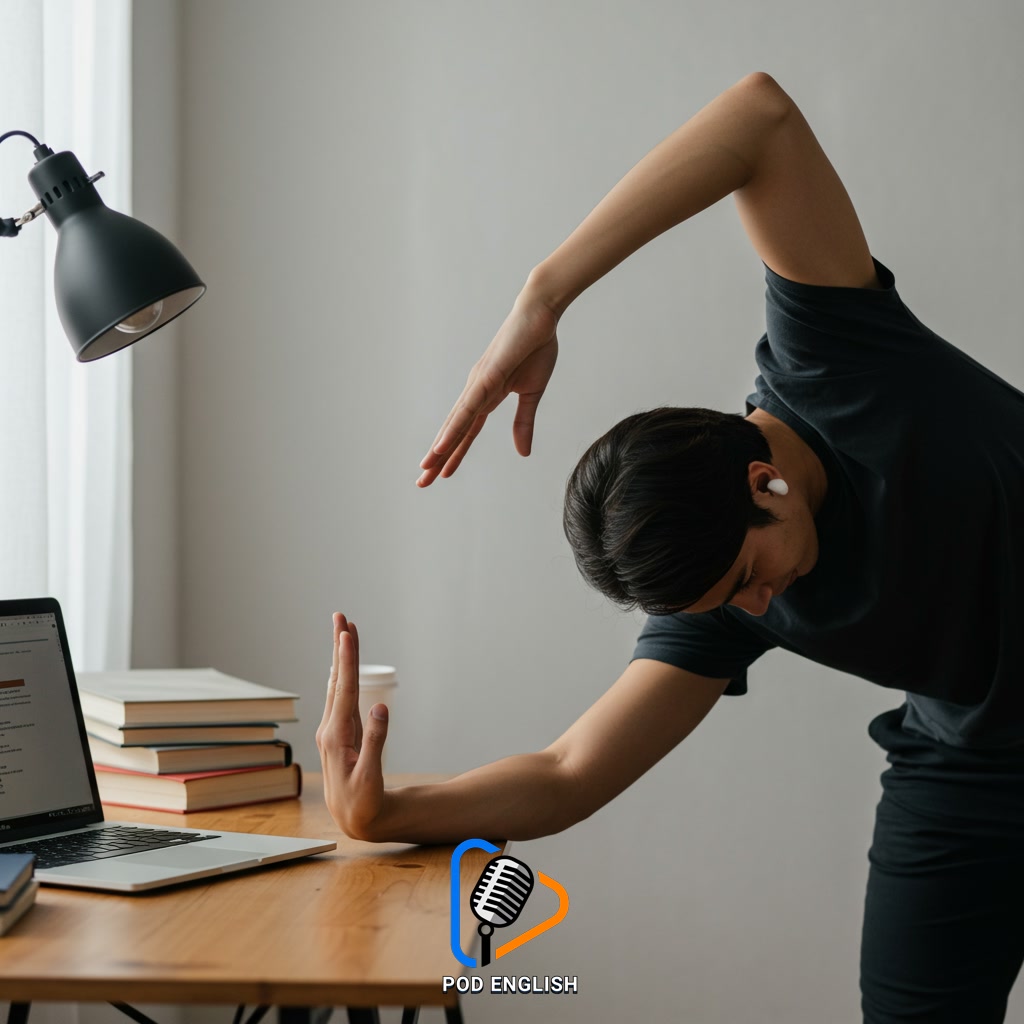Learn English
Quick Workouts to Boost Energy for English Study

This content explores effective quick physical activities designed to enhance energy levels. The primary focus is on how these brief workouts can improve focus and stamina specifically for individuals engaged in learning English. Implementing these simple exercises can help maintain concentration and productivity during study sessions.
Table of Contents
- Section 1: Why Quick Workouts Boost Your English Study
- Section 2: The Connection: How Physical Activity Enhances Learning
- Section 3: Effective Quick Workout Ideas for Study Breaks
- Section 4: Integrating Movement into Your English Learning Routine
- Section 5: Sample 5-10 Minute Workout Routines
- Section 6: Making it a Habit: Tips for Consistency
Section 1: Why Quick Workouts Boost Your English Study
Engaging in quick physical activities might seem unrelated to mastering English, but there’s a powerful connection. When you take a short break for a quick workout, you increase blood flow to your brain. This boost in circulation enhances cognitive functions crucial for language learning, such as concentration, memory retention, and problem-solving. Sitting for long periods can lead to mental fatigue and decreased focus. A brief burst of exercise helps combat this by releasing endorphins, which improve mood and reduce stress, making your brain more receptive to absorbing new English vocabulary and grammar. It’s not about exhausting yourself, but about revitalizing your mental energy and sharpness, ensuring you stay productive and focused throughout your English study sessions.

Section 2: The Connection: How Physical Activity Enhances Learning
When you engage in physical activity, even just for a few minutes, your heart rate increases, pumping more oxygen-rich blood throughout your body, including your brain. This surge in blood flow provides essential nutrients and oxygen that fuel brain cells, improving their function. For English learners, this means enhanced cognitive abilities crucial for language acquisition: better concentration to focus on grammar rules, improved memory retention for learning new vocabulary, and increased mental clarity to understand complex sentences or conversations. Short bursts of exercise help clear mental fatigue and reduce stress, making your brain more receptive and efficient at processing new information. This physical boost directly supports your mental effort, making your English study sessions more productive and effective.

Section 3: Effective Quick Workout Ideas for Study Breaks
This surge in blood flow provides your brain with the necessary fuel to stay alert and focused. Integrating brief, effective physical activities into your study routine is key to maintaining this improved cognitive state. Consider simple options like jumping jacks, high knees, or a quick brisk walk around your study area. Even a few minutes of dynamic stretching or bodyweight squats can significantly boost your energy levels. These short bursts of movement interrupt prolonged sitting, reactivate muscles, and help clear mental fog, making you feel refreshed and ready to dive back into your English learning with renewed concentration.

Section 4: Integrating Movement into Your English Learning Routine
Building on the idea that increased blood flow sharpens your mind, the next step is actively integrating physical movement into your English learning schedule. This isn’t about scheduling a separate gym session, but rather weaving brief bursts of activity throughout your study time. Think of it as active breaks. Instead of just taking a static rest, stand up, stretch, walk around, or do a few simple exercises. This conscious effort to move helps break the monotony of sitting, prevents mental fatigue, and keeps your brain supplied with oxygenated blood. By making movement a regular, even short, part of your English study routine, you maintain higher energy levels and improve your capacity to focus on new vocabulary, grammar rules, or listening exercises for longer periods. It’s a simple yet powerful strategy to boost your study effectiveness.

Section 5: Sample 5-10 Minute Workout Routines
To put the concept of integrating movement into practice, here are a few simple 5-10 minute workout routines you can easily incorporate after a concentrated English study block. These aren’t intense gym sessions, but rather light activities designed to gently elevate your heart rate and increase blood flow without causing fatigue. Consider options like a brisk walk around your room or building, a set of jumping jacks or high knees, dynamic stretches such as arm circles or leg swings, or even a quick burst of bodyweight squats or lunges. The key is consistency and choosing movements you can do easily in your study environment. This short burst of physical activity helps break sedentary periods, sends fresh oxygen to your brain, and can significantly improve your alertness and readiness for the next study session.

Section 6: Making it a Habit: Tips for Consistency
Now that you have some quick workout ideas, the key is making them a regular part of your routine, especially after English study sessions. Consistency is crucial for experiencing the full benefits of increased energy and focus. To build this habit, try scheduling your short workout right after a study block, treating it like an important follow-up task. Start small, perhaps just 5 minutes, and gradually increase the time as you feel comfortable. Linking the workout to a specific study milestone, like finishing a chapter or completing a practice test, can act as a helpful trigger. Find activities you genuinely enjoy, as this makes it much easier to stick with them. Remember, the goal is regularity, not intensity; even a short, consistent effort makes a significant difference in maintaining your energy for continued learning.














